Australian Tropical Rainforest Plants - Online edition
Sida cordifolia L.
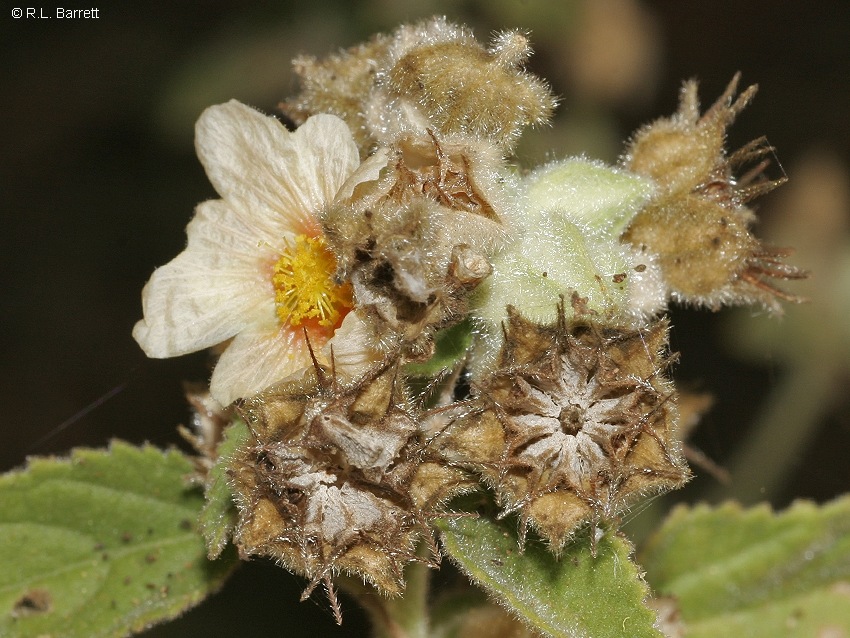
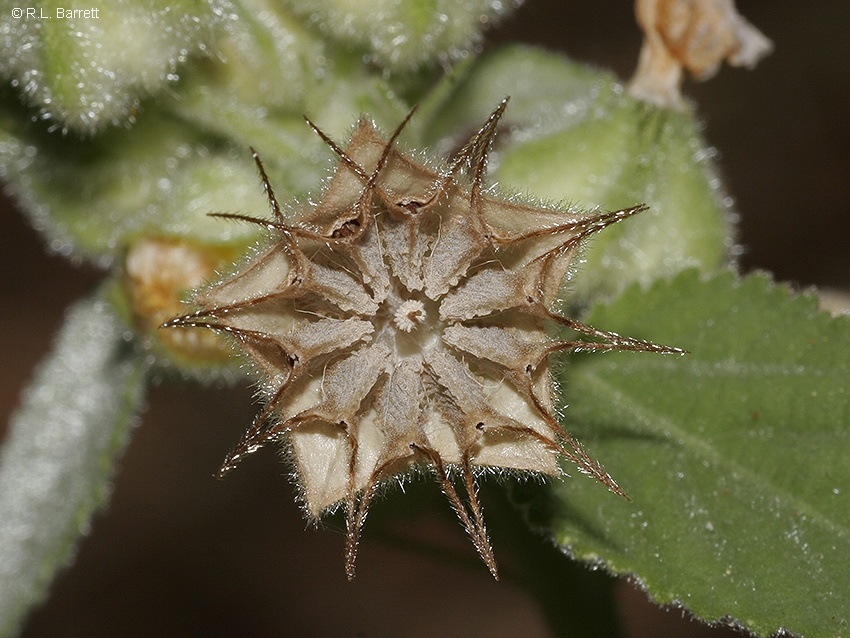
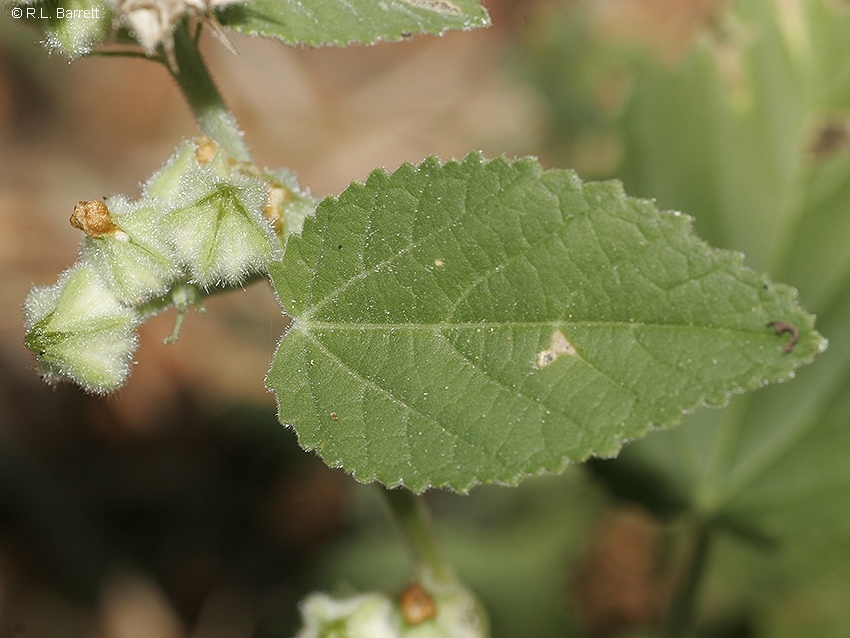
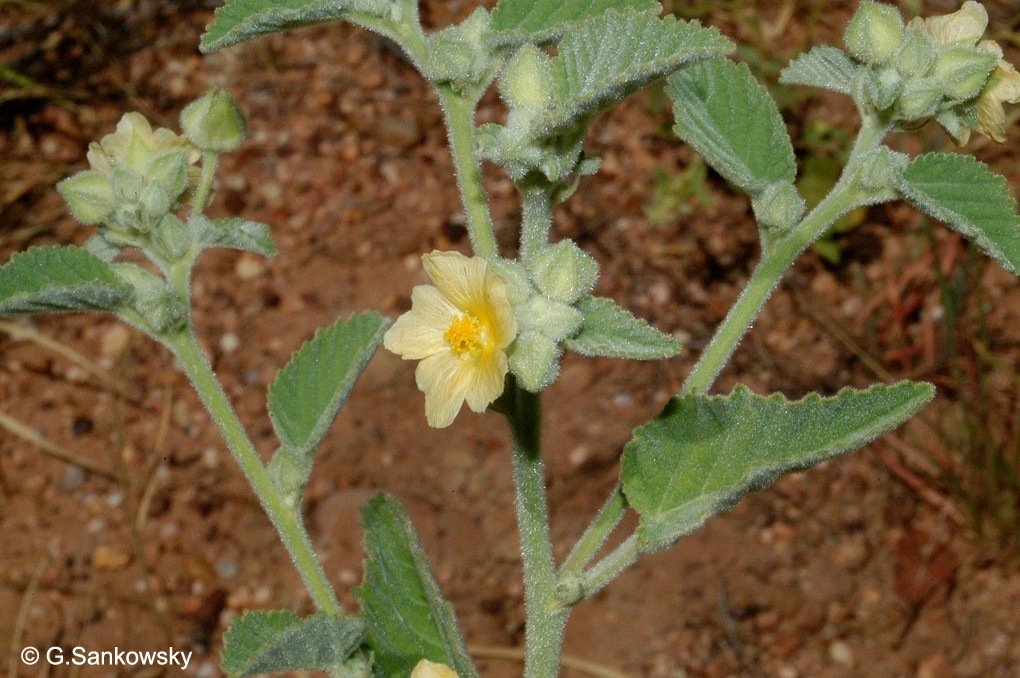
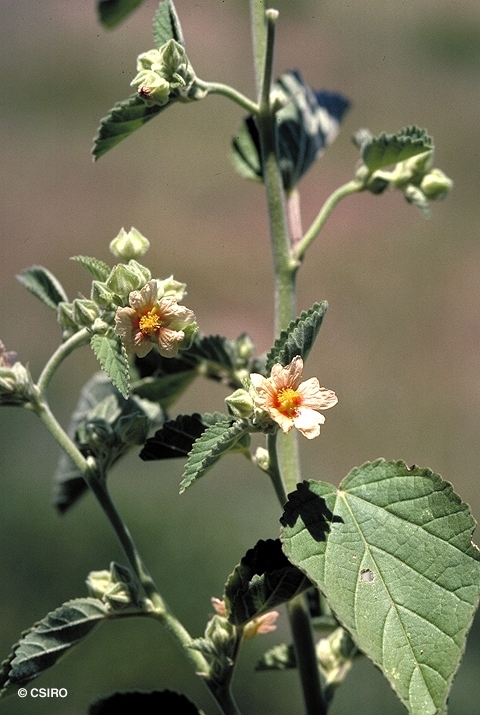




Linnaeus, C. von (1753) Species Plantarum 2: 684. Type: Habitat in India. Holo: Herb. Linn. n. 866.12; LINN.
Goat's Horns; Sida; Flannel Weed
Usually flowers and fruits as a shrub about 1-2 m tall.
Fruit about 3-4 mm high and about 6-8 mm diam., consisting of a dry persistent calyx which encloses about 10 plumed nutlets each containing a brown seed. Each nutlet with two spines at the apex. Cotyledons folded, each cotyledon about as long as the radicle but much wider.
Cotyledons about 6-11 x 7-10 mm long, petioles 6-7 mm long, sometimes longer than the cotyledons. First pair of leaves almost orbicular, clothed in stellate hairs, leaf margin toothed. At the tenth leaf stage: leaf blade +/- cordate, quite densely clothed in stellate hairs on both the upper and lower surfaces. Stipules filiform, about 2-11 mm long. Stem bark strong and fibrous when stripped. Seed germination time 8 to 12 days.
An introduced species with a pantropic distribution, now naturalised in WA, NT, CYP, NEQ, CEQ and southwards as far as north-eastern New South Wales. Altitudinal range in northern Australia from near sea level to 800 m. Usually grows as a weed of agricultural land and waste places but also found in disturbed areas and along roads in rain forest, monsoon forest and vine thickets.
This species may have medicinal properties.
This species is rich in mucilage and has been used in treating dysentery and fevers; the leaves can be used as a poultice fir headaches and ulcers. Cribb (1981).





